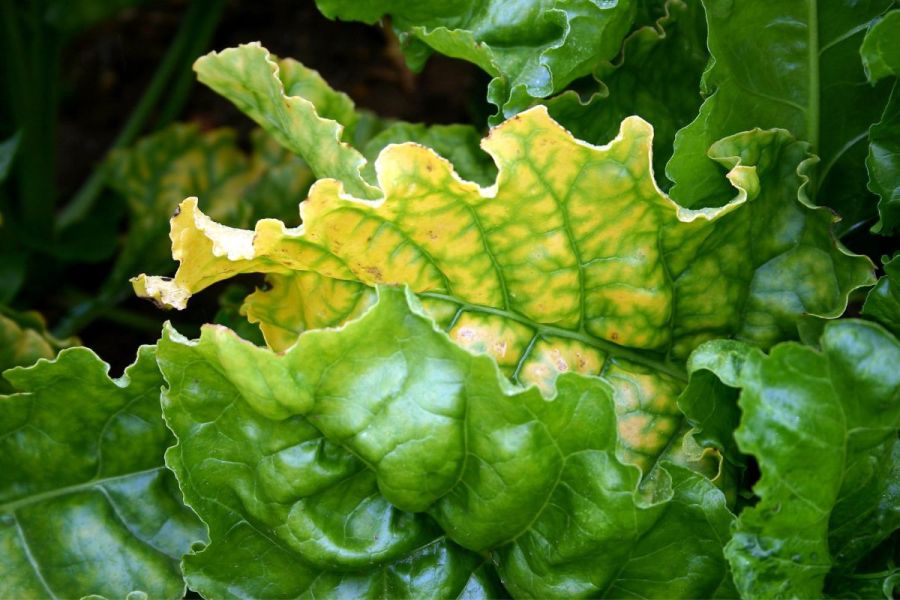Growers learned about progress being made to find solutions to virus yellows in sugar beet at the recent BBRO BeetTech 24 event. CPM joined delegates to hear the latest updates.
“It’s encouraging this new material is showing yield tolerance to all three of the yellowing viruses.”
By Mike Abram
The yield penalty from sugar beet varieties with virus yellows tolerance is closing rapidly, as indicated by the latest results from BBRO trials. A total of 24 varieties were tested in 2023 against all three key virus yellow strains, explained Dr Alistair Wright at BBRO’s Beet Tech 24 event at Newmarket Racecourse.
“We’ve seen some really promising results, with virtually all of the breeders putting forward promising candidates,” he said. Candidate varieties were compared in the inoculated trials against five control varieties, including BTS1915, Daphna and Lacewing. The work also included plots without any virus yellows infection.
In the trial, BTS1915, the highest yielding variety on the current BBRO Recommended List, yielded nearly 100t/ha adjusted in the absence of virus yellows infection and had around a 35% yield loss in plots inoculated with Beet Virus Yellows – the most yield robbing of the virus yellows complex. “That’s not as high as the 50% yield loss we typically see from Beet Yellows Virus,” noted Alistair.
The work showed that Daphna is more susceptible to beet yellows with a 45% yield loss – which aligned to previous years’ results, said Alistair, while having a similar yield to BTS1915 in the absence of virus yellows.
“We also use Lacewing as we know that’s a good indicator variety, which shows severe yield loss (60%) and 95t/ha adjusted without virus infection.”
In comparison, the yield loss from the first commercial variety with a level of virus yellows tolerance, Maruscha KWS, is less severe but comes with a near 15% yield penalty in the absence of virus. That yield lag has been virtually eliminated in some of the newer candidate varieties.
For example, a variety coded G11, which is in its second year of BBRO trials, has a yield performance in the absence of virus of 98t/ha adj., virtually on par with BTS1915, while a second variety, G21 from a different breeder wasn’t far behind.
Yield loss to beet yellows virus for the two candidates was between 28-32%, with lower yield losses for the other two virus yellows diseases. “It’s encouraging this new material is showing yield tolerance to all three of the yellowing viruses,” said Alistair.
By plotting the yields for each variety in the absence of virus to where each plant had been inoculated with virus, it’s possible to calculate an approximation of the level of virus infection where it becomes beneficial to switch to a tolerant variety where the lines intercept.
While for Maruscha KWS, beet yellows virus infections levels needed to be somewhere between 25% (Lacewing), 60% (Daphna) and 100% for BTS1915, for the G11 variety it was only 10-20% for those three control varieties.
“It’s going to become a good choice to start using these novel genetics as there won’t be too much of a yield penalty, if any,” explained Alistair. “That doesn’t mean we won’t see loss of yield to virus, so the rest of the IPM approaches are still valid until we have truly immune varieties which may come from gene editing approaches.”
He reminded growers of the requirement for good on-farm hygiene to minimise initial virus pressure. “I’m sure you’ve all cleaned up your spoil heaps because they’re a very good source of virus to carry over into future crops. Do pick up the beet that dropped out of the cleaner loader or were left behind the Maus or any groundkeepers coming in the field.”
Other BBRO research is investigating the use of companion crops to camouflage the sugar beet with barley. Those trials have highlighted how it’s crucial for the barley destruction timing to be spot on, said Alistair. “It’s not a silver bullet and can have a negative impact, so watch it carefully and consider destroying as soon as you see fit.”
Rye windbreaks have proved effective at stopping virus spread in the inoculated variety trials, so could be viable options for infield strips, he added. “We’re also planning to plant some brassica strips through commercial crops to see if that reduces virus incidents.”
BBRO hasn’t seen ongoing benefits from rotational flowering strips hosting beneficial insects and aphid predators in neighbouring beet crops. “If you can put them in permanently the literature suggests they’ll do a better job, and that could now be possible through SFI.”
Growing endophyte grasses which produce natural aphid toxins, is the subject of a one-year masters project funded by BBRO and The Morley Agricultural Foundation. Research in New Zealand has suggested the beneficial impact of the endophyte can be transferred into the sugar beet.
“We do think there’s hope,” said Alistair. “But it’s not going to be straightforward as there’s interaction between the grass and beet competing for resources.”
There are also some positive results from dyeing the soil to camouflage the beet crop, which has reduced aphid levels. “While aphids still went over threshold levels, whatever colour we used there was a reduction compared with the untreated, so there’s definitely something about manipulating the sensing of plants by aphids.”
Furthermore, a French company, AgriOdor, is researching using volatiles from perfumes to manipulate aphid sensing. “It looks like it can delay the point at which the crop reaches threshold by up to two weeks, giving beneficials more time to build up,” said Alistair, noting that BBRO would continue to follow the research closely.
With better varietal tolerance and different IPM practices, BBRO has identified a requirement to review current insecticide threshold levels and whether they should be dynamic rather than the black and white current system, said Alistair.
In response, BBRO has commissioned ADAS senior research entomologist Dr Sacha White to review the robustness of current thresholds. “The project will carry out a literature review to see if there are any grounds for change, and if so, whether the thresholds should be more dynamic,” explained Sacha during a video presentation.
“Should they shift depending on the crop conditions? For example, taking account of weather on aphid population growth, the proportion of aphids carrying the virus, crop economics could all be important.”
Another part of the project will review various models for virus epidemiology, aphid population dynamics and sugar beet growth. “We’re looking for useful parameter values that we can use to build a decision support model. For instance, the rate at which a plant is infected by an aphid or the effect temperature has on the reproduction rate.”
Ultimately, ADAS hopes to build a decision support system for virus yellows control, similar to the Acrobat BYDV assessment tool recently launched, he concluded.
This article was taken from the latest issue of CPM. Read the article in full here.
For more articles like this, subscribe here.
Sign up for Crop Production Magazine’s FREE e-newsletter here.




